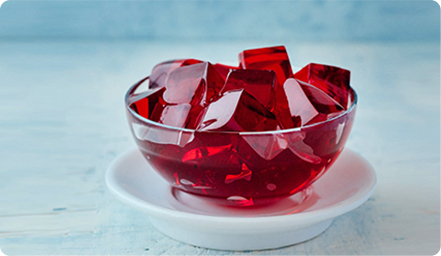-
July, 26,2025
Understanding the Role of Bloom Strength in Soft Gelatin Capsules
-
July, 25,2025
Bloom Strength and Its Impact on Hard Gelatin Capsules
-
July, 21,2025
How Gelatin Is Revolutionizing Pet Food: A Healthier Option for Dogs
-
June, 22,2025
Collagen as a Trusted Ingredient: Meeting Global Demand with Reliable Supply
What Is the Best Gelling Agent for Gummies?
When it comes to crafting the perfect gummy candy, one question stands out: What is the best gelling agent for gummies? The answer isn’t one-size-fits-all—it hinges on your goals, from texture to dietary needs. As a leading gelatin manufacturer, FNP Gelatin knows the ins and outs of gummy production. In this guide, we’ll break down the top contenders—gelatin and pectin—offering practical insights to help you choose. Whether you’re a home candy maker or a commercial producer, understanding these gelling agents can elevate your gummies to the next level.
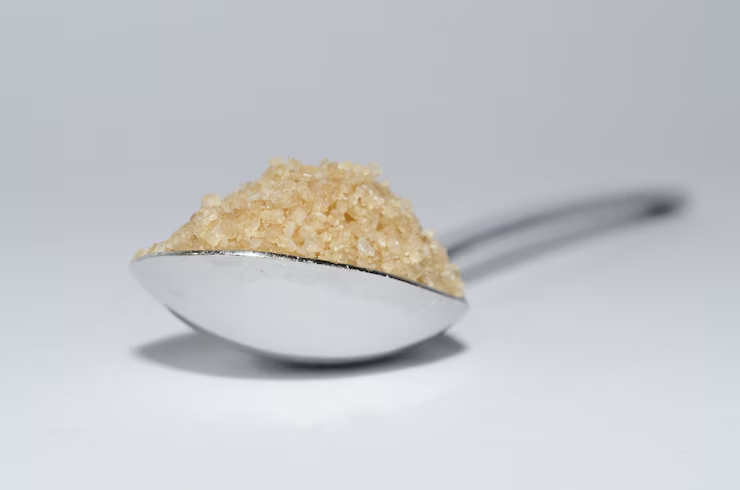
Understanding Gelling Agents in Gummy Candy
Why Gelling Agents Matter
Gelling agents are the cornerstone of gummy candy, turning a syrupy mix into a structured treat with the right chew and durability. They’re not just about setting—they control texture, from soft and tender to firm and bouncy, and ensure gummies hold up under handling or heat. CandyPros explains that gelatin-based gummies resist melting at moderate temperatures (up to 80-85°F), a boon for storage and shipping, while a weak gel might leave you with a gooey mess. The agent also affects flavor: gelatin’s gradual breakdown enhances taste over time, unlike some alternatives that release it too fast. For manufacturers, consistency matters—a dependable gelling agent prevents batch failures, like gummies that won’t unmold or stick to teeth, cutting waste and frustration. Cooking Stack Exchange users note that small-scale errors (e.g., overcooking) can ruin a gel, but the right choice mitigates that risk. Beyond mechanics, gelling agents signal quality to consumers—gelatin evokes tradition, while others hint at innovation. They’re the unsung heroes behind every bite.
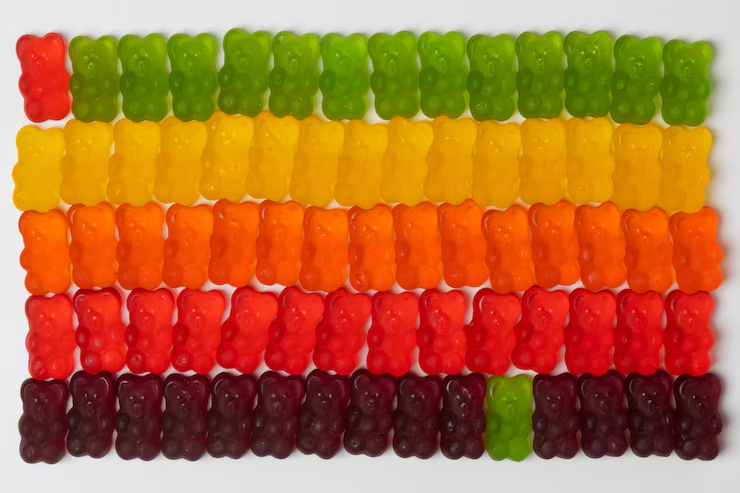
Common Options: Gelatin vs. Pectin
Gelatin and pectin lead the gelling agent pack, each with a unique edge. Gelatin, sourced from animal collagen (pork or beef), is the gummy kingpin—think Haribo or Trolli classics. CandyPros highlights its thermoreversible nature: dissolve it at 140-180°F, cool it, and it sets into a springy, elastic gel that melts in your mouth. It’s forgiving, adapting to varied sugar levels or flavors, and scales well for bulk production at a lower cost per pound. Pectin, a polysaccharide from citrus peels or apples, flips the script as a vegan-friendly option. EndoSemolds praises its heat stability—gummies hold firm even after cooking at 220°F—making it a fit for hot climates or high-temp processes. But pectin’s finicky: it needs a pH of 3.2-3.3 and 70-75% sugar content to gel, per Cooking Stack Exchange, requiring precision tools like pH meters. Edible gelatin dominates mass-market appeal with its nostalgic chew, while pectin caters to niche diets (vegan, halal), though it’s pricier and less forgiving. Your choice hinges on what you value—simplicity or specialty.

Gelatin: The Classic Choice for Gummies
What Makes Gelatin Special?
Gelatin stands apart as the gelling agent that defines gummy candy, delivering a chewy, elastic texture and a smooth, melt-in-mouth finish that’s tough to beat. Sourced from animal collagen—typically pork or beef—it’s a protein that forms a flexible, thermoreversible gel, meaning it liquefies when heated and resets as it cools. CandyPros notes this gives gummies their signature bounce, a quality pectin struggles to mimic. That elasticity isn’t just fun—it’s functional, ensuring gummies snap back after a bite without crumbling or sticking. Gelatin’s unique breakdown in the mouth also enhances flavor release, letting fruit, sour, or sweet notes linger, a trait Cooking Stack Exchange users rave about. For consumers, it’s the nostalgic feel of childhood favorites—gummy bears, worms, and rings—that gelatin perfects. At FNP Gelatin, we refine this natural wonder into a premium product, ensuring every batch brings that classic magic to life.
How Gelatin Works in Gummy Recipes
Using gelatin is straightforward, making it a favorite for both home kitchens and factory floors. The process is simple: bloom it in cold water (5-10 minutes), then dissolve it at 140-180°F, as CandyPros advises, before mixing with syrups or flavorings. Unlike pectin, it doesn’t demand precise pH or sugar ratios—gel strength (measured in Bloom, typically 150-250 for gummies) adjusts to your needs. It sets at room temperature or with slight chilling, forming a gel that’s easy to mold into bears, stars, or custom shapes. EndoSemolds points out gelatin’s forgiving nature: overheat it slightly, and it still works, unlike pectin, which can fail. Small-scale cooks can tweak firmness by adjusting water, while manufacturers rely on its scalability—consistent results across thousands of pieces. FNP Gelatin’s high-purity options ensure clarity and strength, minimizing cloudiness or weak spots in your gummies.
Why Manufacturers Love Gelatin
Gelatin’s reliability is a game-changer for production. Its wide working range means fewer failed batches, saving time and ingredients—a boon for cost-conscious businesses. CandyPros highlights its low melting point (around 95°F), ideal for gummies that dissolve on the tongue but hold up in storage (up to 80-85°F). It pairs with diverse flavors and colors, from tart citric acid to vibrant dyes, without losing structure. For large-scale runs, gelatin’s affordability shines—bulk pricing beats pectin’s higher cost, especially for mass-market products. Plus, it’s widely available and standardized, reducing supply chain headaches. At FNP Gelatin, we cater to this demand with tailored Bloom strengths and rigorous quality checks, ensuring manufacturers get gummies that meet consumer expectations every time. It’s no wonder gelatin remains the industry’s go-to.
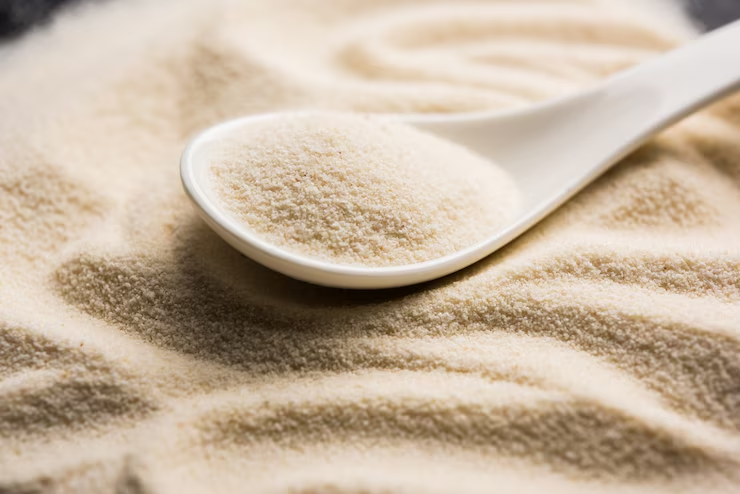
Pectin: The Plant-Based Alternative
Pectin’s Unique Properties
Pectin steps into the gummy spotlight as a plant-based gelling agent, sourced from citrus peels or apple pomace, offering a compelling alternative to gelatin. Unlike gelatin’s chewy elasticity, pectin creates a softer, jelly-like texture—think fruit pastilles rather than gummy bears. EndoSemolds praises its heat stability: pectin gels withstand temperatures up to 220°F during cooking and hold firm in warm conditions (above 85°F), making it a smart pick for gummies sold in hot climates or shipped long distances. This resilience comes from its polysaccharide structure, which sets into a firm yet tender gel under the right conditions. For flavor, pectin’s quick-setting nature can lock in bright, fruity notes, appealing to artisanal candy makers. Its biggest draw? It’s 100% vegan and vegetarian-friendly, meeting the rising demand for plant-based treats. While gelatin rules the classics, pectin carves a niche for modern, diet-conscious consumers.
Challenges of Using Pectin
Pectin’s benefits come with a catch—it’s trickier to master than gelatin. Cooking Stack Exchange users emphasize its precise requirements: a pH of 3.2-3.3 (think added citric acid), a sugar content of 70-75% Brix, and careful temperature control (often 212-220°F) to trigger gelling. Deviate—say, a pH of 3.5 or too little sugar—and you’re left with a syrup that won’t set, frustrating home cooks and stalling production lines. EndoSemolds notes that pectin gels irreversibly once cooled, so mistakes can’t be melted down and reworked like gelatin. This demands tools like pH meters and refractometers, hiking costs, and complexity. For small batches, it’s a labor of love; for manufacturers, it’s a logistical puzzle—precise formulations mean more testing and tighter quality control. CandyPros adds that pectin’s softer texture might disappoint fans of gelatin’s bounce, limiting its mass-market appeal. It’s a trade-off: dietary flexibility for technical finesse.
Comparing Gelatin and Pectin: Key Differences
Texture and Mouthfeel
Texture is where gelatin and pectin diverge most. Gelatin, with its collagen roots, delivers a firm, elastic chew—think the satisfying snap of a gummy bear or the stretch of a gummy worm. CandyPros highlights its ability to create a gel that’s both resilient and smooth, melting slowly in the mouth for a lingering, playful experience. Pectin, by contrast, yields a softer, more brittle gel, akin to jelly candies or fruit chews. EndoSemolds describes it as tender and less springy, which suits delicate flavors but lacks gelatin’s signature bounce. Cooking Stack Exchange users note that gelatin’s mouthfeel is forgiving—slightly under- or overcooked, it still feels pleasant—while pectin’s texture can turn gummy or grainy if conditions stray. For consumers craving that classic gummy vibe, gelatin wins; pectin shines for a lighter, jam-like bite.

Dietary Considerations
Dietary needs often tip the scales. Gelatin, being animal-derived (pork or beef), fits omnivorous diets but excludes vegans, vegetarians, and those with religious restrictions (e.g., halal or kosher, unless specially sourced). CandyPros underscores its dominance in mainstream candy, where dietary limits are less of a concern. Pectin, plant-based from citrus or apples, is the inclusive choice—vegan, vegetarian, and widely halal-compatible. EndoSemolds points out its appeal in health-focused markets, where labels like “plant-based” boost sales. However, gelatin’s protein content (about 85-90% pure protein) adds a nutritional edge, albeit minor, over pectin’s carbohydrate base. For broad appeal, gelatin leads; for niche diets, pectin takes the crown.
Ease of Production
Production practicality sets these agents apart. Gelatin’s process is a breeze—bloom, heat to 140-180°F, cool, and set, per CandyPros. It tolerates minor errors, scales effortlessly, and works with basic equipment, making it a manufacturer’s dream. FNP Gelatin’s high-quality options enhance this reliability, ensuring uniform results. Pectin, however, is a diva—Cooking Stack Exchange warns of its narrow window: pH 3.2-3.3, 70-75% sugar, precise heat (212-220°F). Miss a step, and it’s a runny disaster, demanding lab-like precision and extra tools (pH meters, refractometers). EndoSemolds adds that pectin’s irreversible set means no do-overs, unlike gelatin’s melt-and-remake flexibility. For simplicity and cost, gelatin excels; pectin’s complexity suits specialized runs.
Why Gelatin Remains the Top Pick
Industry Standard for a Reason
Gelatin isn’t just a gelling agent—it’s the backbone of gummy candy as we know it. From Haribo bears to Trolli worms, its dominance stems from a winning combo of texture, reliability, and universal appeal. CandyPros calls it the gold standard for its elastic, chewy gel that holds shapes like stars or rings without crumbling—qualities that pectin can’t fully match. Its thermoreversible nature (melt at 140-180°F, set on cooling) gives producers flexibility, whether tweaking a recipe or fixing a batch. Gelatin’s low melting point (around 95°F) ensures that melt-in-mouth magic consumers love, while still standing up to moderate heat (80-85°F), per EndoSemolds. Decades of use have fine-tuned its role in mass production, making it the default for iconic treats. It’s not nostalgia alone—gelatin delivers results that keep customers hooked.
FNP Gelatin: Your Partner in Quality
At FNP Gelatin, we elevate this classic agent to meet modern demands. Our premium gelatin, available in Bloom strengths from 150-250, caters to every gummy need—soft and stretchy or firm and snappy. We prioritize purity, ensuring clear, vibrant gummies free of cloudiness or off-flavors, a common gripe with lesser grades. Manufacturers trust us for consistency—each batch gels predictably, minimizing waste and maximizing output. Home cooks love our user-friendly options, needing only basic tools to achieve pro-level results. Cooking Stack Exchange users note gelatin’s forgiving nature shines with quality sourcing, and FNP Gelatin delivers that edge. Whether you’re crafting a small artisanal run or supplying a supermarket chain, our expertise backs you up with a product that’s been the industry’s choice for generations.
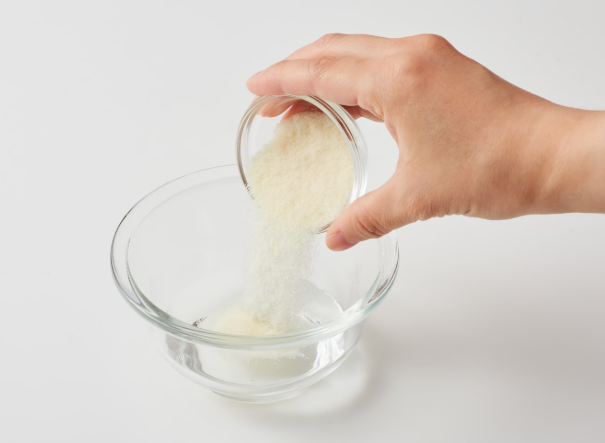
Making the Choice for Your Gummies
So, what is the best gelling agent for gummies? It depends, but gelatin often takes the crown. Its ease, cost-effectiveness, and crowd-pleasing texture outshine pectin’s niche appeal for most applications. Pectin has its place—vegan diets or heat-stable needs—but its complexity and softer bite limit its reach. Gelatin’s versatility suits beginners and pros alike, delivering that classic gummy experience with minimal fuss. For FNP Gelatin customers, it’s more than a choice—it’s a guarantee of quality, rooted in a legacy of candy-making excellence. When consistency and satisfaction matter, gelatin remains the smart pick.

Final Thoughts
Deciding what is the best gelling agent for gummies boils down to your priorities—texture, ease, or dietary fit. Gelatin, with its chewy bounce and melt-in-mouth charm, remains the unbeatable choice for most, backed by decades of gummy-making success. Its simplicity and versatility make it a no-brainer for home cooks and manufacturers alike, delivering consistent, crowd-pleasing results without the fuss. Pectin offers a solid alternative for vegan or heat-stable needs, but its technical demands and softer bite cater to a narrower crowd. At FNP Gelatin, we’ve seen firsthand how quality gelatin transforms ideas into iconic candies—our premium products ensure that reliability and excellence go hand in hand. Whether you’re chasing nostalgia or scaling a business, gelatin’s proven track record, paired with our expertise, sets the standard. Pectin has its merits, but for the ultimate gummy experience, gelatin—and FNP Gelatin—is the way to go.
Phone: +86-577-88105990
Mobile: +86-138 5886 1938
Official Website: www.fnp-gelatin.com
Email: sales@funingpu.com
Address: No. 1-10 Wenpu Road, Yacheng Town, Xiapu County, Ningde City, Fujian Province

